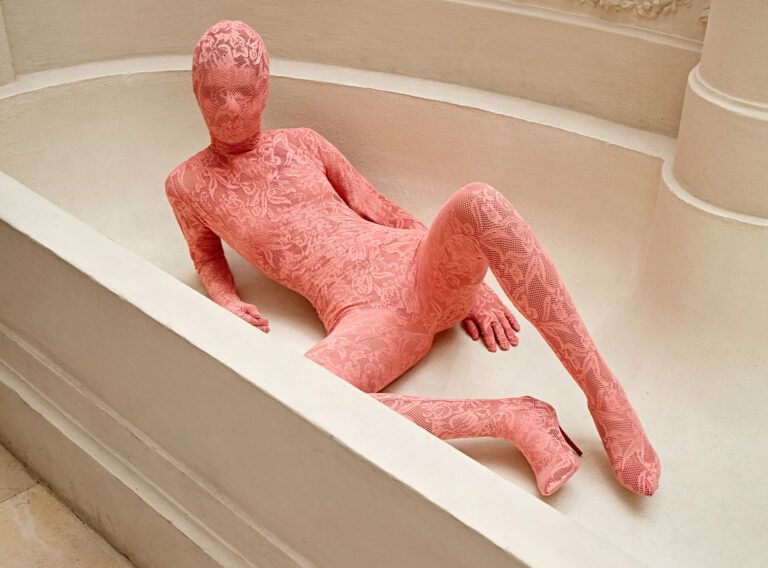Vincent Snijder possesses a unique ability to seamlessly merge the realms of movies and gaming in his captivating creations. Drawing inspiration from a vast array of tools, techniques, workflows, and media, he constructs a creative toolkit that transcends traditional boundaries. Armed with software applications like Unreal Engine and ZBrush, he skillfully brings to life intricate objects, buildings, and environments that would otherwise demand an eternity to materialize. With a profound admiration for the immersive worlds found within the movie and game industry, he infuses his work with a harmonious blend of aesthetics and storytelling.
Beyond the realm of artistry, his exploration extends into the intricate interplay between tangible and intangible cultural heritage. Enthralled by the nexus where rituals, gestures, tools, and places converge, he unveils the essence of diverse cultures. Through his deep appreciation of both real and imagined worlds, he embarks on a journey to unravel the visual languages that mold and define societies. Vincent’s art serves as a bridge, connecting the past with the present, while simultaneously pushing the boundaries of artistic expression.

“This passion fuels my artistic practice, where I strive to dissect the intricate processes through which these visual languages take root and flourish. I seek to apply this dynamic to my own creations, be it objects, buildings, or environments. The two latter are solely in digital media (for now hopefully. my dream project would be to design and build a physical ornate temple).
Driven by a love for visual storytelling, I try to dissect and decipher the process of how these visual languages get established. By studying their nuances, I try to gain insight into the intricate threads that weave together a cultural narrative. This exercise becomes the foundation upon which I build my own objects, architectural structures, and digital landscapes.”



One notable project exemplifying this approach is the Shrine Triptych series, which serves as an exercise in inventing sacred spaces. Each image in the triptych is imbued with a distinctive narrative or story, conveyed through visual means. This prompts me to consider how a specific mythology or belief system would manifest its ceremonial instruments, oracles, and shrines.
For instance, envision a mythology centred around divine communication through sacred instruments. In this narrative, the ceremonial instruments would be crafted, reflecting both the cultural aesthetics and the symbolism associated with the deities or spirits being invoked. They would embody a blend of functionality and ornate design, their forms inspired by the mythology’s visual lexicon. Delicate engravings or patterns could depict stories, deities, or significant events, deepening their symbolic meaning.



Cloud interface, 2021 (graduation project):
“Gathering around a campfire was once the ritual that brought people together, but in today’s digital era, our connections are forged through ones and zeros, cables, chips, and frequencies. The mouse, keyboard, and screen have become our modern ceremonial objects, facilitating the upload of our consciousness to the digital realm, where server rooms, data centers, and cloud storage spaces house our collective experiences. In the immersive experience titled ‘Cloud Interface,’ we embark on a journey to explore our ritualistic relationship with emerging technologies.



Serving as a meeting point between ourselves and the flows of information that we engage with, this experience unveils the hidden mechanisms that operate behind our screens. This iconography of the information age delves into the impact of our digital tools and networks that extend our bodies and minds and plug us into an ecosystem of connectivity.
Put on the virtual-reality headset and let the ceremony commence. ‘Cloud Interface’ invites you to partake in a transformative encounter, where the boundaries between the physical and the digital blur. Through this immersive exploration, we consider the rituals and symbiotic relationship we have developed with technology, offering a glimpse behind the screens of our interconnected world.”

Subfiction – Enter 2022-ongoing:
Current project. linking Ableton with Unreal Engine. It is still in the development phase. a completely reactive world where a musical live show controls environments.
Debut: mid-October 2023
‘SUBFICTION – ENTER’ is a collaboration between musician SUBFICTION and multidisciplinary designer Vincent Snijders, exploring the interactivity between music and digital scenography. The aim of the research is to explore the friction between technology and nature and question how data streams influence our reality. The result is an audiovisual live performance combining music and animation, with a focus on world-building and storytelling.
In conjunction with the exploration of natural and artificial sources in the creative process, the project investigates ways to control surreal digital landscapes through sound and performance. Over the course of 45 minutes, the audience embarks on a journey through three worlds, transitioning from an organic to a mechanical atmosphere.
The design process involves the simultaneous development of music and visuals, intertwining an album within digital 3D worlds. Using a programmed algorithm, parameters within music software (Ableton) are linked to a video game engine (Unreal Engine). This generates an innovative system where music can directly manipulate animations. Electronic musical instruments manipulate weather conditions, fauna, and flora within the game animations. The projection of the animations covers the entire surface of the venue while live music is performed, creating an immersive setting. The performer’s costume (SUBFICTION) is also connected to the virtual worlds and plays a role in the narrative.
The performance and album are divided into three chapters, visually translated into three worlds. The protagonist within the animations of these worlds is connected to the performer (named SUBFICTION), and guides the audience through the different realms. Each world presents its own challenges, visualizations, and sound designs.


The design responds to the music during the live performance through the algorithm between Unreal Engine and Ableton. The physical control is achieved through the use of analog synthesizers and MIDI controllers, allowing the performance to manipulate the visual aspect in a unique way, making each exhibition different. The three chapters have different parameters that are controlled to maintain visual interest for the audience. Frequencies, tones, and tracks of the music are mapped to parameters of the visual world in the game engine.




